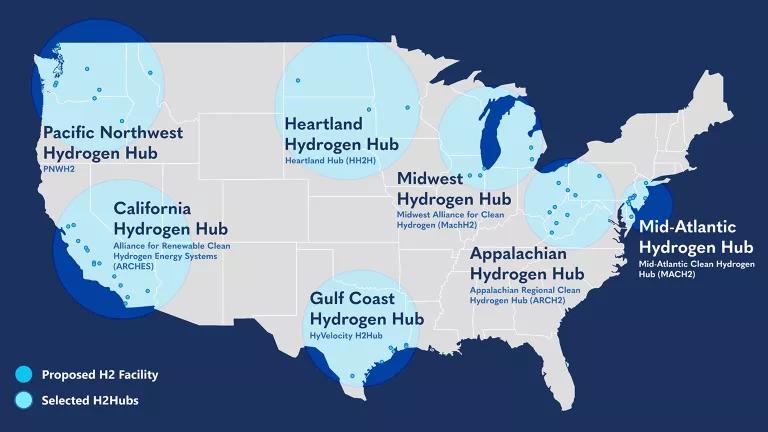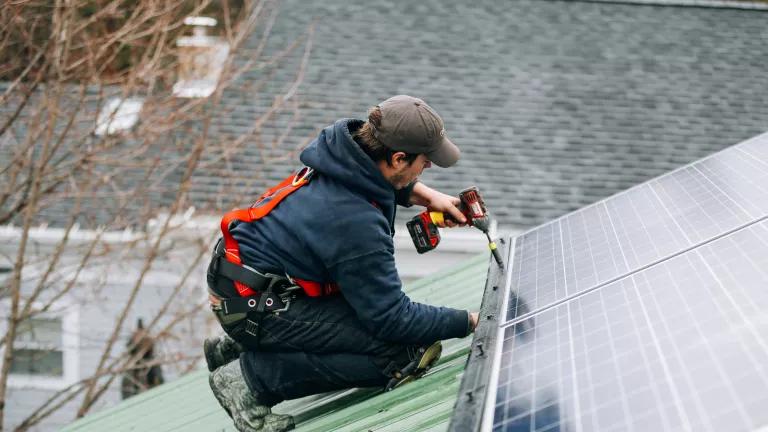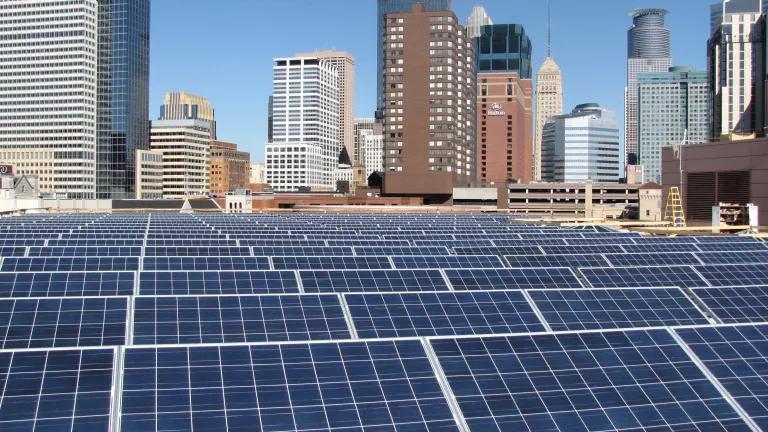Seven Months After the DOE Hydrogen Hub Announcement: Where Are We Now on Community Engagement?
This blog is a brief overview of what we've seen on community engagement around the DOE's proposed Regional Clean Hydrogen Hubs since the announcement last October, and it provides recommendations for what we'd like to see moving forward.

The proposed seven regional hydrogen hubs in the United States
The U.S. Department of Energy
Last October, President Biden and the Office of Clean Energy Demonstrations (OCED) announced seven Regional Clean Hydrogen Hubs, spanning 16 states, as part of the Department of Energy’s (DOE) hydrogen hub (H2Hubs) program. As NRDC noted after the announcement of the $8 billion program, funded by the Bipartisan Infrastructure Law: “The process to distribute a pot of money this big with the potential to shape entire industries and state economies shouldn’t be a black box….Thus far, transparency in the administration of the hubs program has been sorely lacking.”
Seven months later, a lack of transparency and community engagement remains the case. Despite concerted efforts by groups across the country, environmental justice advocates and frontline communities have largely been kept in the dark on key details and basic information about many of these projects. Well-founded fears about the health and environmental impacts of the hubs are growing—and going unaddressed.
In a recent round of virtual community listening sessions hosted by OCED, communities in the Appalachian region voiced their deep concerns about the prospective Appalachian Regional Clean Hydrogen (ARCH2) Hub’s impact on local community health, the lack of engagement from hub officials, and, as one community member put it, “the failure of the DOE to live up to its goals around community engagement and environmental justice.”
While we acknowledge that the DOE is new to conducting large-scale project deployment, there is significant need and scope for improvement as it relates to transparency, information sharing, and community engagement.
What we’ve observed since October 2023
Seven months after the program’s announcement, potentially impacted communities across many hub states are expressing deep concern about the lack of engagement to date on the part of hub administrators and the DOE. Communities in Pennsylvania have been particularly outspoken about the lack of engagement and their fears over project impacts from the ARCH2 and Mid-Atlantic Clean Hydrogen (MACH2) hubs, both of which plan to build in their state.
In February, 32 environmental justice organizations submitted a joint letter outlining their frustrations regarding the first in-person public meeting for the proposed MACH2 Hub. The letter expressed strong concerns around a lack of basic accessibility considerations, including that the meeting took place during the working hours of a weekday with no virtual attendance option, and that the location, the Steamfitters’ Union Hall, was far away from proposed project site locations—and not near where impacted communities live.
Their letter requested that the organizers consider community concerns “…and set a meeting that will maximize, not limit, the people who will be able to take part…Environmental justice communities that could be impacted, in particular, should be given special consideration in regards to access and information about the MACH2 components that are planned for their communities as their environmental burdens are already too great with respect to established environmental justice laws.”
Similar concerns are echoed across communities within other selected hubs, such as ARCH2. “We do not trust a public benefits plan that is negotiated in secret with the proponent without the active participation of the public before contracts are signed,” said Jim Kotcon, chair of the West Virginia chapter of the Sierra Club. This point gets squarely to concerns that the benefits associated with these projects don’t reflect what impacted communities truly need and want.
Beyond glaringly insufficient engagement, the projected “community benefits” outlined by the hubs' leaders largely emphasize workforce and economic development benefits, with little to no reference to how these projects will benefit communities from a local public health perspective nor how they may address existing legacy pollution. It is also unclear how, or if, the benefits associated with each hub were identified by or with impacted communities.
What does OCED say about meaningful community engagement?
OCED has released recommendations for the H2 Hub program on community engagement as part of its guidance on Community Benefit Plans (CBPs), and stated that it would provide summaries of the CBPs on its website for “transparency and accountability,” but it has yet to do so for six out of the seven announced hubs. The one exception is the California H2 Hub (ARCHES), which was required to publish its draft CBP under state law. But even California’s draft CBP lacked critical pieces of information regarding fundamental components of the project.

The Office of Clean Energy Demonstrations’s CBP process timeline
U.S. Department of Energy
We need more community engagement
It is clear that we must fundamentally shift how community engagement is viewed within the context of large-scale energy projects. Engagement is not meant to simply inform a community that a project is happening and try to garner community buy-in to offset potential pushback during planning and approval processes. Rather, it should be a proactive process to understand the perspectives and preferences of communities, develop durable relationships with the local communities for the lifetime of the project, and ensure projects mitigate any concerns raised.
Community engagement improves projects, and it should be a tool to make sure that projects reflect community needs. Environmental justice communities are rightfully skeptical and wary of developer-led, large-scale energy projects near where they live, given the historical legacy of government and developers leaving them out of critical engagement processes. The DOE risks perpetuating this same dangerous pattern if it doesn’t address the poor community engagement head-on.
What we recommend to the DOE moving forward
Here are some immediate steps that the DOE can take to shore up confidence in its administration of the hubs program and steer the effort in a better direction:
-
Further clarify the timeline and opportunities for public engagement on the various hubs, offering a road map of what the public can expect to see from hubs and OCED, and when.
-
Share information about the DOE’s selection logic for each hub ASAP. This can help cultivate more confidence in the DOE’s stewardship of billions of dollars of taxpayer funds.
-
Offer guidance and examples of what meaningful community engagement looks like.
-
Offer a range of potential benefits that communities and project proponents might consider while crafting CBPs in collaboration with impacted local communities.
-
Publish projected emissions linked to planned hydrogen production across the seven awarded hubs.
And there are steps that the DOE should require from each hub to build better foundations for transparency:
-
Require hub awardees to publish all prospective project sites ASAP, even if those sites may shift.
-
Strongly encourage—if not require—all hubs to publish their CBPs now to allow communities to provide input and be active participants in the process.
-
Require that all CBPs include a clear timeline and opportunities for engagement to influence hub projects.
-
Encourage project proponents to incorporate the details of CBPs into the terms of their permits or other accountable and enforceable agreements that will be negotiated and agreed to over the course of project design, approval, and implementation.
In February, we sent a joint letter with the Clean Air Task Force and other groups offering additional areas of transparency we would like to see from OCED.
Communities must be at the forefront of a decarbonized energy future
Environmental justice is about ensuring that low-income communities of color are not disproportionately burdened by environmental harm and that impacted groups are made active decision-makers in environmental governance processes. In the case of the H2 hubs, communities want to have a say in how these projects will be implemented. Communities hold expertise; involving them early and often will improve projects in the long run. In order to achieve an equitable decarbonized energy future, communities must be at the forefront of shaping it.


